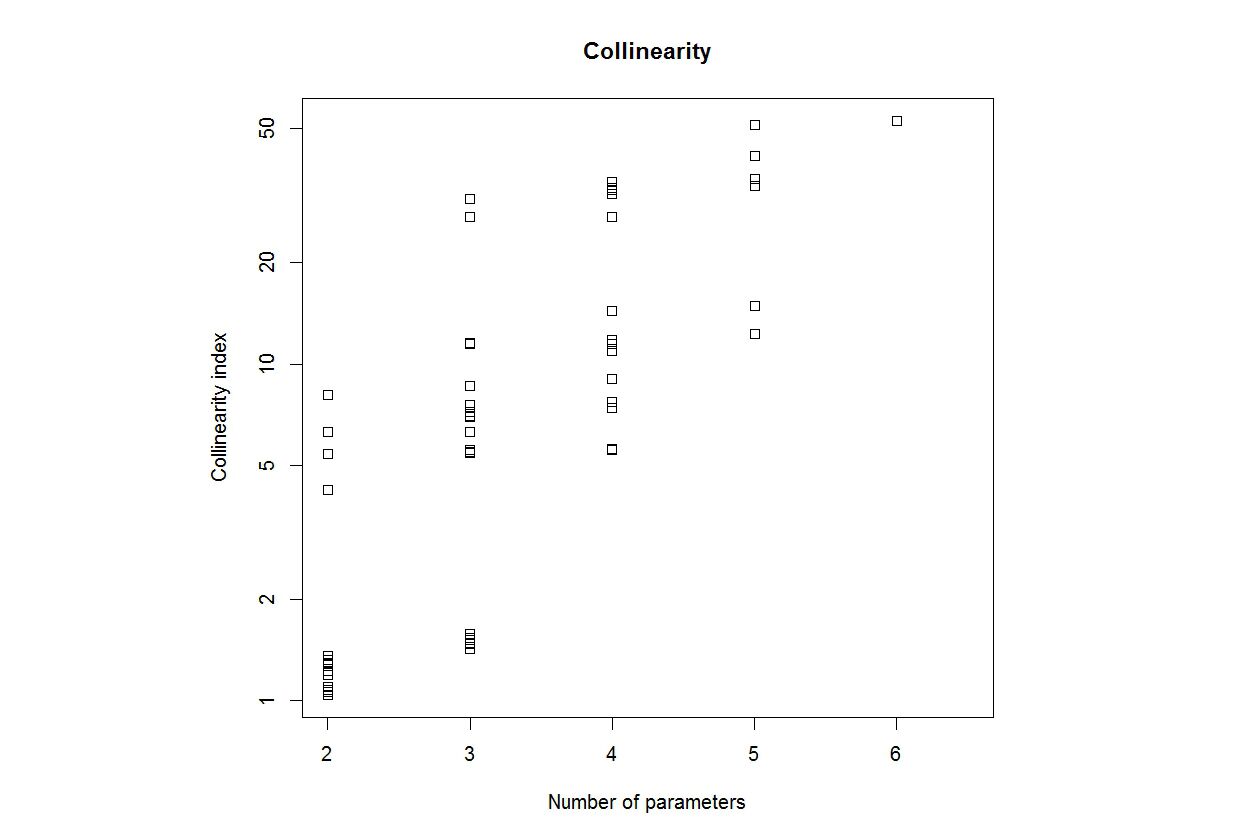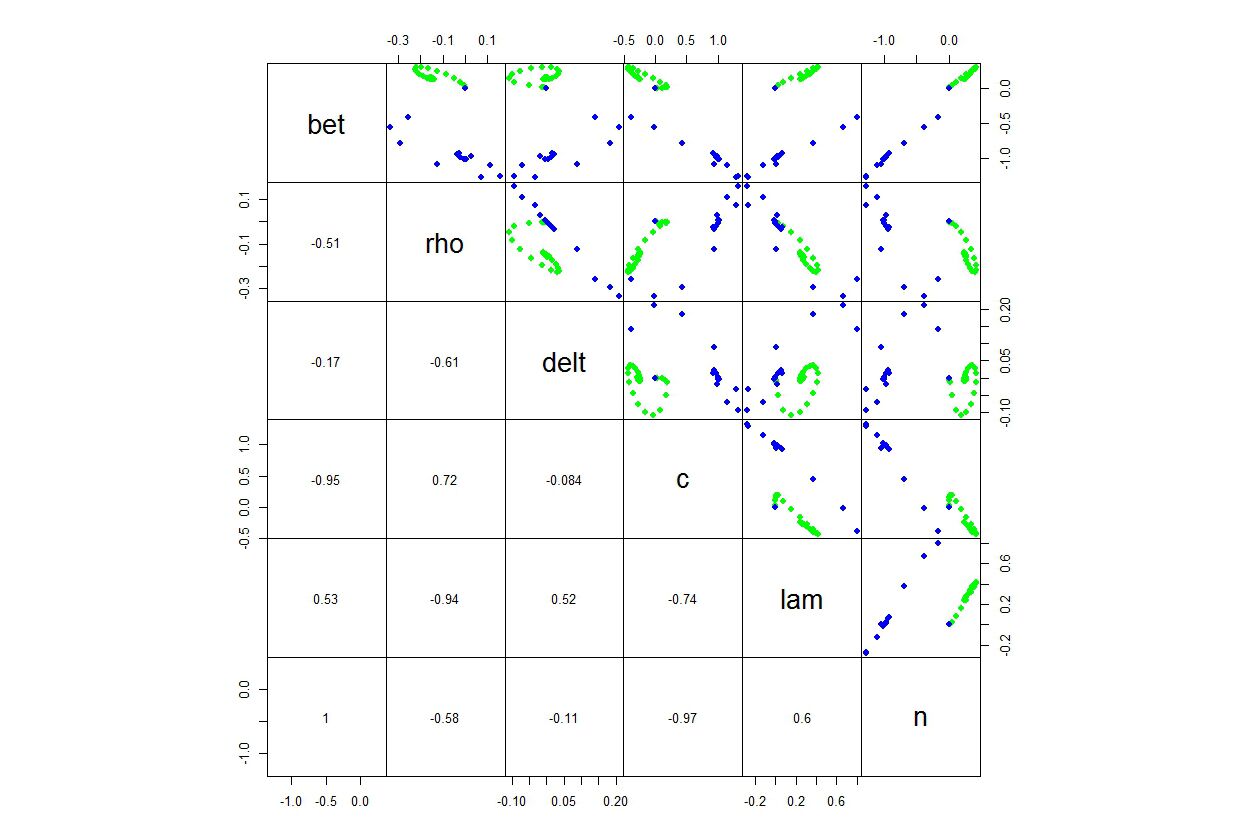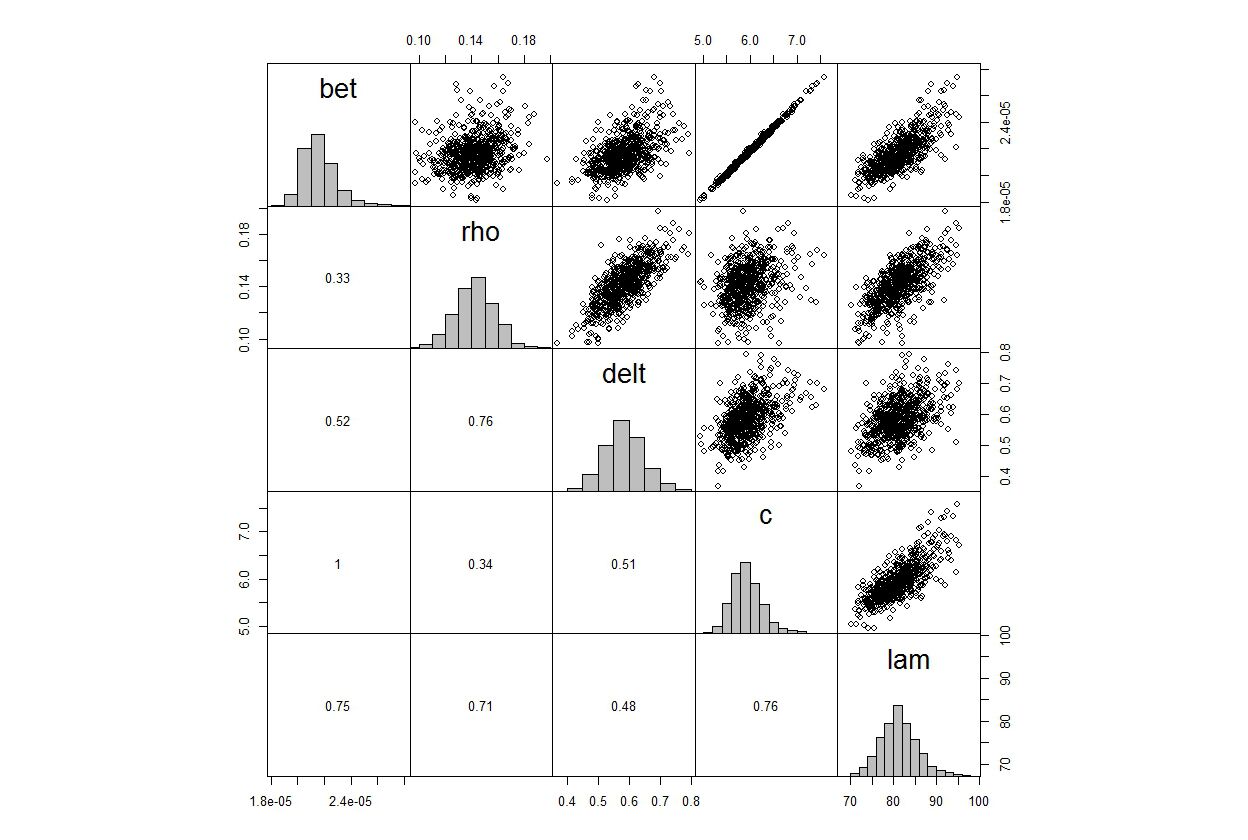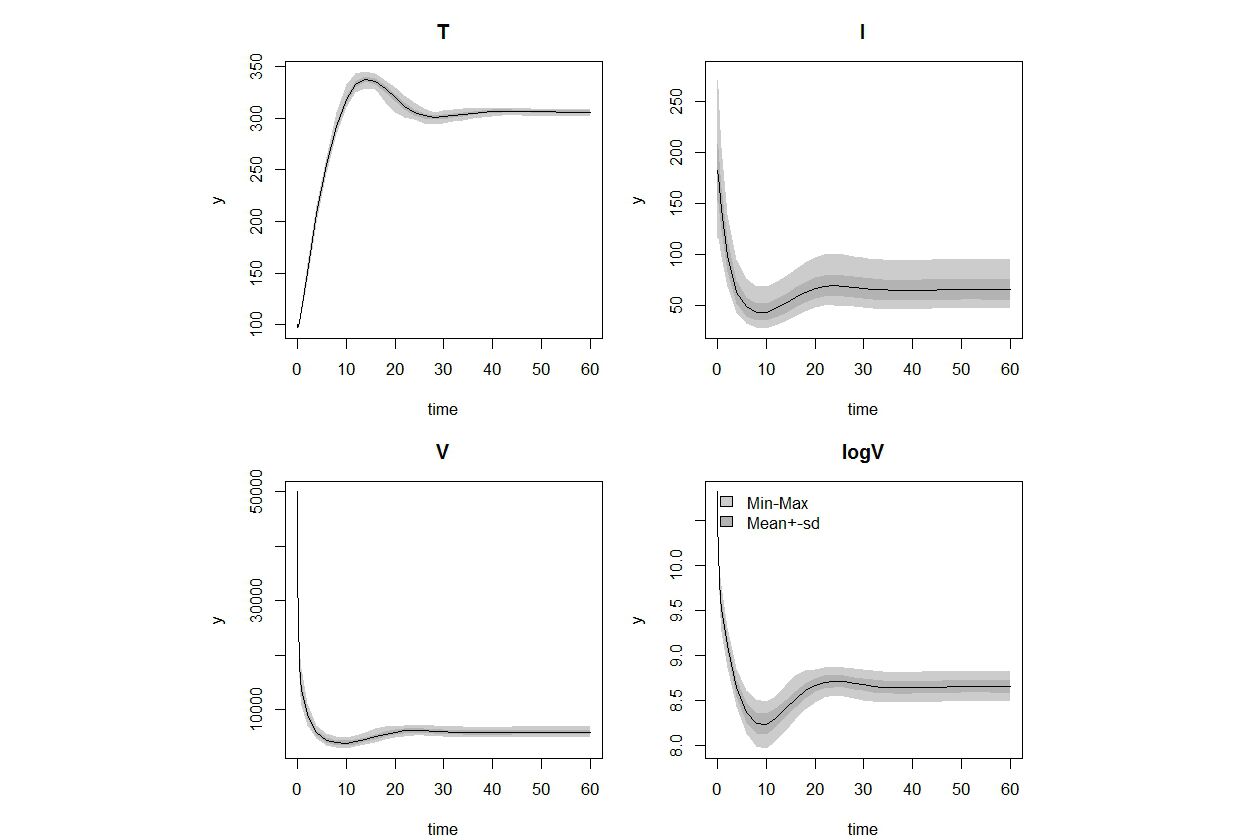Model-Data comparison
The R-package FME was developed by Karline Soetaert in cooperation with Thomas Petzoldt from the University of Dresden (Germany). It contains statistical and fitting functions to help with model-data comparison. This is a very complex package, but quite powerful.
Typically, fitting a complex model to data proceeds in several steps. We start by determining the parameters that can be fitted, based on parameter collinearity and identifiability analyses. After producing a best-fit set of the selected parameters, we then use a MCMC technique to quantify parameter uncertainty, and to produce sensitivity ranges around the modeled variables. The MCMC implemented in FME is especially adapted to models that are computationally demanding.
The package is documented in five (!) different vignettes, each detailing a particular type of application. There is enough material in there – if you cannot find it in one of the vignettes, then it is probably not possible!
In the gallery at the bottom of this page, you will find several figures illustrating the process; the figures are taken from the main vignette, so you can find the R-code to create these plots in there.




